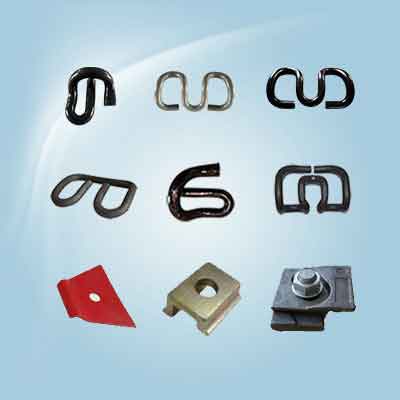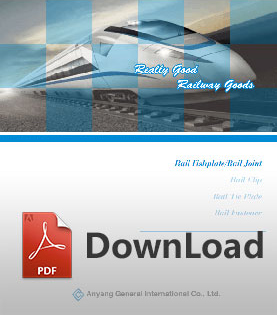History of Railroad in China-Part 1

Until now, Chinese railway already had more than 100 years history. If from laying the first profitable railroad---Wusong railway, the time which was settled down in our country was about 123 years. If from the Tangxu railway was laid, the Chinese railway is about 118 years old. The first china’s own railway is Tangxu railway. More than a century, Chinese railway undergoes two stages: modern and contemporary time.
Railroad in modern China
The railroad in modern china is unprecedented industry, and with the semi-colonial and semi-feudal nature. In this stage of development, the construction and operation of railroad is controlled by imperialism, feudalism and bureaucratism. This situation causes the slow development and difficult operation of Chinese railroad at that time.
Chinese railway in the late Qing Dynasty
In 1875, the UK laid a 14.5-kilometer long railroad---Wusong railway. Wusong railway is the first profitable railroad in China. On January 20th, railway sleeper laying began in shanghai. It was built by the UK without permit. Wusong railway ran about one year, and Qing government redeemed and teared down it.


Tangxu railway is the first railway that was built by Chinese people in 1881. It ran from Tangshan to xugezhuang (9.7-0kilometer). On July 1, 1881, Mrs. Burnett (Wife of Kaiping Ming Bureau’s chief engineer) nailed the first railroad spike in Tangshan, and Tangxu railway was completed in November. In the initial stage of using, because Qing government thought the vehicle will shock the imperial tombs along the railway, and the train was driven by mules and horses. So Tangxu railway was called horse tramway. And then it was used to transport coal. Tangxu railway opens the railway construction in China.


Jing-Zhang railway, a railway is firstly designed and constructed by Chinese. It was designed and built by Zhan Tianyou from 1905-1909. That is why he is called the father of Chinese railway. Jing-Zhang railway is about 200-kilometer long, and it is from Beijing to Zhangjiakou. Under the conditions at the time, it was widely considered difficult construction of railway. And Zhan Tianyou pioneered herringbone railway during the construction of Jing-Zhang railway.


In May 1911, Qing government announced state-owned railway policy. And government nationalized the privatizing railways, include Chuan-han railway, Yue-han railway. This policy caused the Protection Railway Movementin Sichuan, which is the fuse of the 1911 Revolution. After Qing government fell, the Chinese Republic founded. From 1881-1911, there were 9000-kilometer long railway were built in China.


Chinese railway in the beginning of Republic
In the early period of republican China, there were 2100-kilometer railway had built during the Beiyang government. In 1928, Nanjing government set up many development plans, but most of them didn’t complete. From 1928 to 1948, Nanjing government built 13000 kilometers railway in China.

In 1937, Qiantang River Bridge was built. As the first one designed and built by China itself, it is a two-tier highway and railway bridge. Qiantang River Bridge across Qiantang River. It is one of main arteries between the Shanghai-Hangzhou-Ningbo railway and Zhejiang-Jiangxi railway. Qiantang River Bridge was designed and built by the Chinese famous bridge engineer-Mao Yisheng. It took three years to build. But completion was less than two months later, qiantang River Bridge was bombed by Mao Yisheng to prevent Japanese attack.


During the Republic of China, because of frequent wars and imperialist interference, Chinese railway developed slowly and abnormally. Firstly, low number and skew distribution. Most of railways were spread in east of china, the west of China only had 6% of whole Chinese railway. Secondly, disorder standard and low quality. Western countries controlled Chinese railway for long time, they used different standards of railway in Chinese railway, and sold disorder equipment with low quality to Chinese railway. Finally, divisional and backward management. Almost all railways were built by borrowing foreign debt, so that Chinese railway was charged by different western countries.

To sum up, in modern china, Chinese railway developed slowly. But to a certain extent, it pushed forward china’s economic development. As a modern means of transport, railway played an important role in transport and travel. Click here to continue on to part 2: Chinese railway in contemporary time
You may also like:
- Rail Fasteners
- rail fastening system
- rail clip
- railroad spike
- Track bolt
- rail shoulders
- rail anchor
- rail clamp
- tie plate
- Rail Pad
- rail insulator
- rail plastic dowel
- other rail fasteners
- Railway Switch
- SKL series rail fastening system
- Chinese standard rail fastening system
- screw spikes
- Crane rail fastening system
- K type rail clip for Africa
- Hey-Back Rail Fastening
- rail fasteners for Mexican market
- Ss25 screw spike
- Ss35 rail sleeper screw spike
- Ss8 screw spike
- coach screw
- Crane Rail Clip
- Rail Joints (Fishplate)
- Steel Rail
- Railway Sleeper
 rail clip
rail clip
 rail joints
rail joints

 Español
Español English
English
